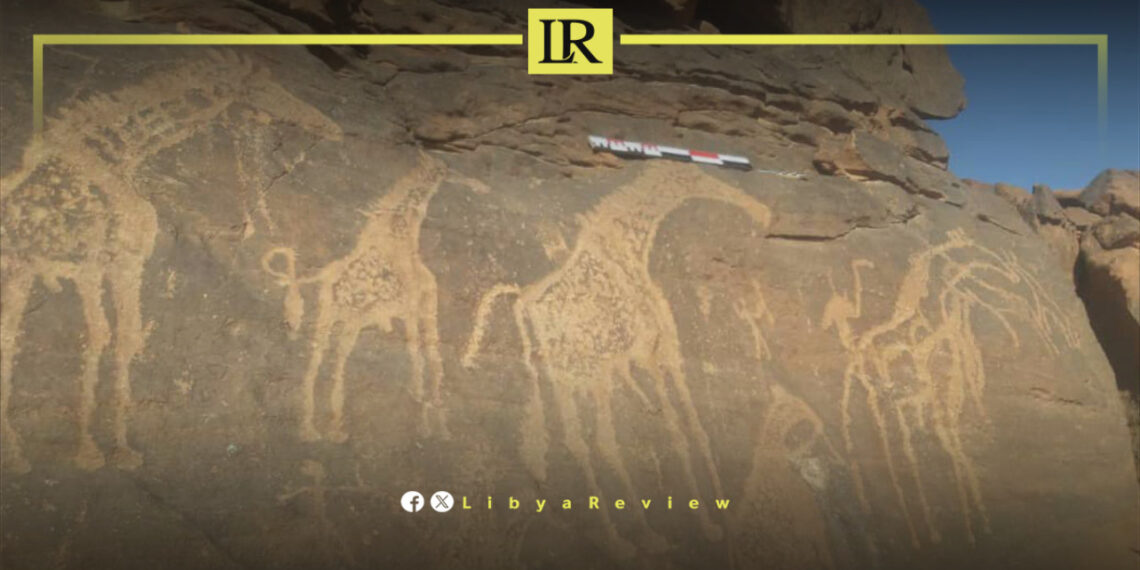Authorities in southern Libya have uncovered a potentially significant archaeological site dating back approximately 10,000 years, in the Al-Hasawna mountain region near “Wadi Mubarak.”
The discovery was made after a citizen reported suspicious markings believed to be of historical value to the Sabha branch of the Tourist Police and Antiquities Protection Agency. Following the alert, a formal investigation was launched and the Public Order Prosecution in Sabha, along with the Fezzan Antiquities Authority, were notified.
Acting on directives from Major General Al-Sanousi Saleh Al-Sanousi, head of the agency, and the Director of the Public Order Prosecution, a joint inspection team was formed. The team included representatives from the Tourist Police in Sabha and Wabari, expert archaeologists from the Fezzan Antiquities Authority, the Head of the Archaeology Department at Sabha University, and the Brak Al-Shati Security Directorate.
Preliminary analysis confirmed the site’s historical significance. The location contains multiple rock engravings spanning several key prehistoric art phases in the Libyan Sahara:
Round Head Period
Buffalo Period
Bovidian Period
Camel Period
Horse Period
The carvings reflect the evolution of Saharan rock art and are believed to offer rare insights into life in the region over millennia.
Authorities have taken immediate legal steps to secure the site. Patrols from the Southern Region Tourist Police and Antiquities Protection Agency have been assigned to guard the area and prevent theft or vandalism.


